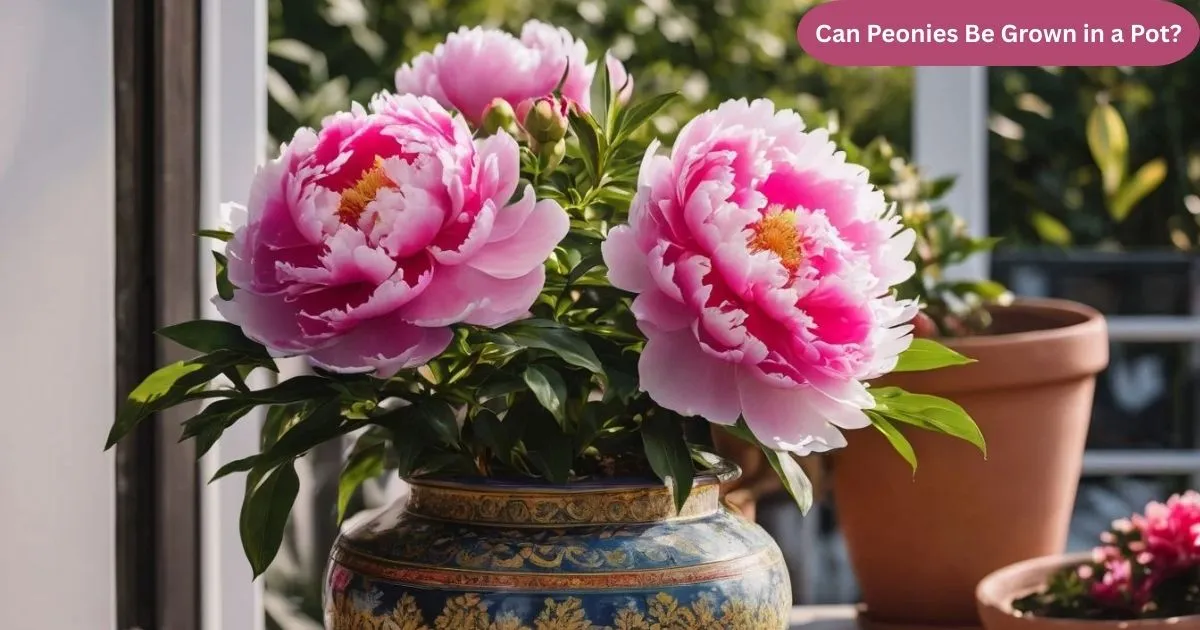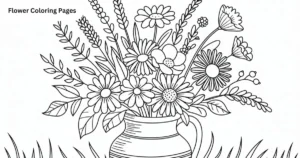Peonies are prized for their stunning, fragrant blooms and are a favorite among gardeners. While traditionally grown in garden beds, these beautiful flowers can also thrive in pots, making them perfect for smaller spaces like balconies, patios, or apartments. Growing peonies in containers allows you to enjoy their beauty even if you don’t have a large garden.
However, growing peonies in pots requires careful planning and attention to ensure they get the proper care they need. From selecting the right pot to providing sufficient sunlight and watering, there are a few key factors to consider. In this guide, we’ll explore how to successfully grow peonies in pots and enjoy their vibrant flowers year after year.
The Right Type of Peony for Pots
Not all peonies are created equal when it comes to container gardening. Tree peonies and herbaceous peonies are two popular types, but herbaceous peonies are generally a better choice for growing in pots. Tree peonies have woody stems and need more space, which makes them more difficult to manage in pots. Herbaceous peonies, on the other hand, have soft stems that die back each winter, making them more adaptable to container life.
Choosing the right variety of herbaceous peony is crucial for successful container growth. Look for varieties that are smaller or compact, as they will have an easier time thriving in confined spaces. Some of the best options for pots include varieties like ‘Sarah Bernhardt,’ ‘Festiva Maxima,’ and ‘Bowl of Beauty,’ all of which have a manageable size and lovely blooms.
Selecting the Right Pot
The pot you choose for your peonies is essential to their success. It needs to be large enough to accommodate the peony’s roots as they grow, while still offering sufficient drainage. A good rule of thumb is to select a pot that’s at least 18 inches in diameter. This size allows the roots to spread out, preventing the plant from becoming root-bound.
The material of the pot also plays a role in the plant’s overall health. Terra cotta pots are a great option as they provide excellent drainage and allow the roots to breathe. However, they can dry out quickly, requiring more frequent watering. Plastic or ceramic pots are also viable alternatives but ensure they have adequate drainage holes to avoid waterlogging.
Soil Requirements for Peonies in Pots
Peonies thrive in well-drained, nutrient-rich soil. When planting peonies in a pot, it’s essential to choose a potting mix that is light and well-draining. A high-quality potting soil mixed with organic compost works well, as it provides the necessary nutrients while allowing for good airflow around the roots.
Avoid using heavy garden soil, as it can become compacted in containers, limiting root growth and water drainage. Additionally, make sure to add a layer of gravel or broken pottery at the bottom of the pot to further enhance drainage. This will help prevent root rot and ensure your peonies stay healthy.
Choosing the Right Location
Peonies require full sun to thrive, so it’s important to place your potted peonies in a spot where they will receive at least six hours of direct sunlight each day. A sunny balcony, patio, or balcony garden can be perfect for growing peonies in pots. Make sure the location is sheltered from strong winds, as peonies can be top-heavy and might get damaged during storms.
While peonies love sunlight, they also don’t tolerate extreme heat or dryness. If you live in a hot climate, try placing your pot in a location where it gets afternoon shade to protect the plant from the harsh midday sun. This balance of sunlight and protection will ensure that your peonies bloom beautifully.
Watering Peonies in Pots
Watering peonies in pots can be a little tricky. Since containers dry out faster than garden soil, it’s important to keep an eye on moisture levels. Peonies prefer moist, well-drained soil, but they don’t like sitting in water. Be sure to water your peonies thoroughly when the top inch of soil feels dry, but avoid overwatering, as this can lead to root rot.
During the growing season, peonies may need more frequent watering, especially in hot or dry weather. However, it’s crucial not to let the soil dry out completely. Adding a layer of mulch on top of the soil can help retain moisture and prevent it from evaporating too quickly.
Fertilizing Peonies in Containers
Peonies are relatively low-maintenance when it comes to fertilizing, but providing the right nutrients can boost their growth and blooming potential. In pots, the soil can become depleted of nutrients more quickly, so it’s essential to feed your peonies regularly. Use a balanced, slow-release fertilizer, applying it in early spring as the plant begins to grow.
Avoid using fertilizers with too much nitrogen, as this can result in lush green growth at the expense of flowers. Instead, opt for a fertilizer with a balanced ratio of nitrogen, phosphorus, and potassium to encourage both healthy foliage and abundant blooms. Fertilizing once or twice a year should be sufficient to keep your potted peonies healthy.
Dealing with Winter in Pots
One of the challenges of growing peonies in pots is protecting them during the winter months. While herbaceous peonies die back in the fall, their roots can still be vulnerable to freezing temperatures. In colder climates, you may need to take extra precautions to ensure your peony survives the winter.
To protect your potted peonies from freezing, you can either bring the pot indoors to a cool, unheated space such as a garage or basement or insulate the pot with burlap or a thick layer of mulch. If bringing the pot indoors isn’t an option, make sure the pot is placed in a sheltered location to minimize exposure to frost.
Pruning and Maintaining Potted Peonies
Pruning is essential to maintaining the health and appearance of your potted peonies. After the flowers have bloomed in the spring, you can cut back the spent stems to ground level. This will not only keep your plant looking tidy but also help the plant conserve energy for the next growing season.
In the fall, it’s important to remove any dead or diseased stems, leaves, or flowers. Peonies are generally disease-resistant, but keeping them tidy helps prevent potential issues. In addition to pruning, regularly check your peonies for pests like aphids or ants, which are attracted to the flowers’ sweet nectar.
Potential Challenges of Growing Peonies in Pots
While peonies can thrive in pots with the right care, there are some challenges to be aware of. One of the most common issues is the plant becoming root-bound. As peonies grow, their roots can outgrow the pot, making it harder for them to get the nutrients and space they need. This can result in poor flowering or stunted growth.
Another challenge is the limited space that pots provide for root growth. Peonies have deep roots, and while they can survive in pots for a few years, they may eventually need to be repotted into larger containers. Additionally, potted peonies require regular attention to watering, fertilizing, and sunlight, as they don’t have the buffer of a larger garden bed.
Read More: Are There Two Ways to Pronounce Peony?
Conclusion
In conclusion, growing peonies in pots is a viable and rewarding option for gardeners with limited space or those who want to add beauty to their balconies or patios. With proper care, including choosing the right variety, selecting a suitable pot, ensuring proper soil, and maintaining ideal watering and sunlight conditions, peonies can thrive in containers.
Although challenges like root-bound growth may arise, regular attention and maintenance can help overcome them. By following the right practices, potted peonies can offer stunning blooms year after year, making them a perfect addition to any small space garden.
FAQ’s
Can peonies be grown in any type of pot?
No, they require a large, well-draining pot, preferably 18 inches in diameter.
How often should I water peonies in a pot?
Water them thoroughly when the top inch of soil feels dry, but avoid overwatering.
Can peonies survive winter in pots?
Yes, but you may need to insulate the pot or move it to a sheltered location during freezing temperatures.
What type of fertilizer should I use for potted peonies?
Use a balanced, slow-release fertilizer with equal ratios of nitrogen, phosphorus, and potassium.
Do peonies need full sun when grown in pots?
Yes, peonies require at least six hours of direct sunlight each day to thrive.









